When Audi decided to cease its factory Formula E and DTM racing programs it also became the custodian of two seemingly redundant powertrains overnight.
In 2019 it had built one of the greatest four-cylinder combustion engines in motorsport history which it used to claim back-to-back DTM titles, while its Formula E powertrain which debuted earlier this year is claimed to be a staggering 97 per cent efficient.
However, with no factory racing in either category, both the combustion and electric powertrains were set to be packed away to collect dust. That is, until a team of engineers realised they could combine the pair to take on the toughest race in the world – the Dakar Rally.
The longest and most difficult off-road motorsport event in the world is hard enough in a combustion powered vehicle, but Audi intends to complete it without using an ICE engine to power the wheels. Bold, considering the longest stage of this year’s Dakar rally ran for 813km (337km of which were competitive), while the penultimate day included 511km of timed course.
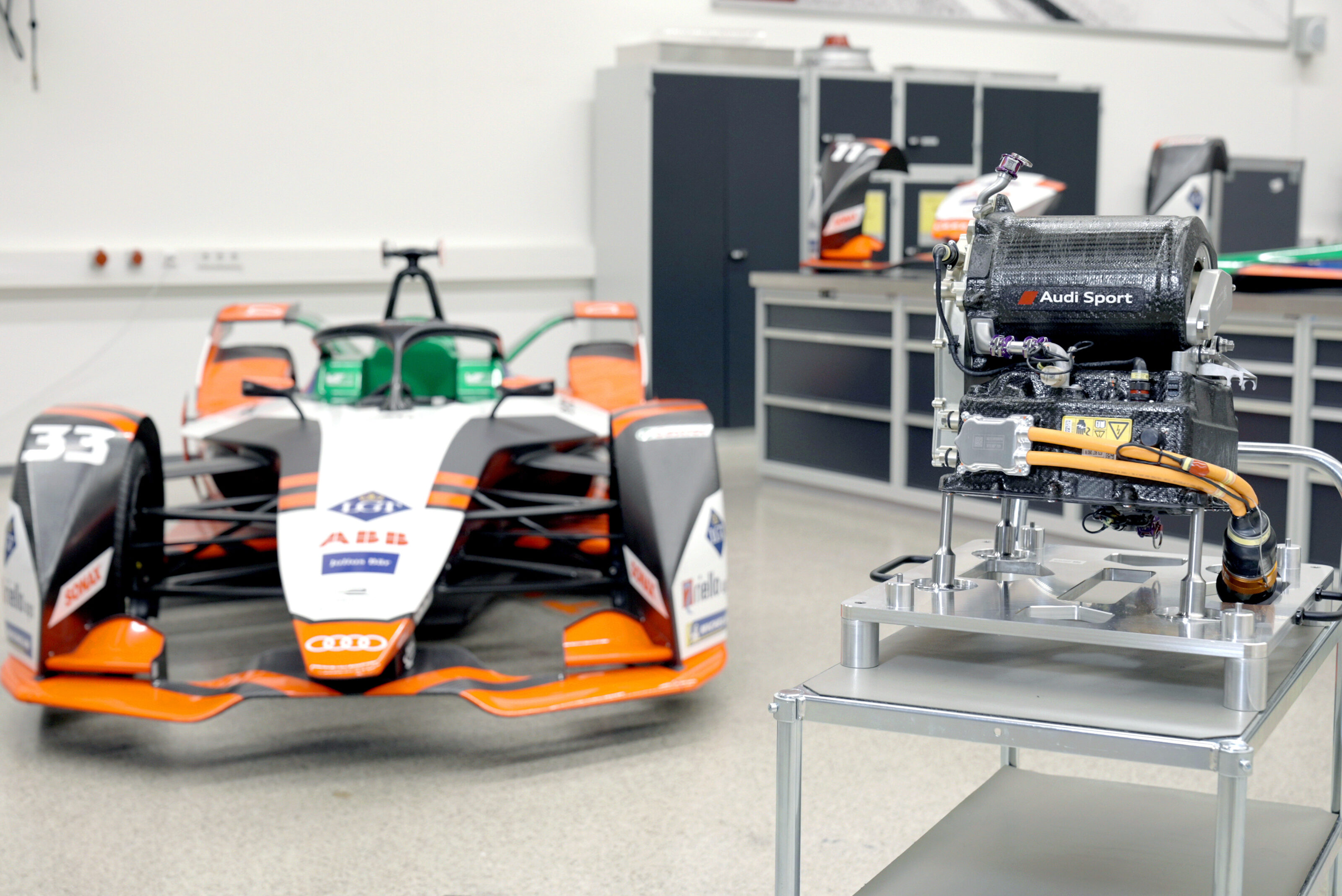
The vehicle Audi has built to take on the challenge is the RS Q e-tron, which will use a trio of electric generators, a 50kWh battery and range extender to take on global motorsport’s most gruelling event. We’ll forgive you for being underwhelmed when you first hear the phrase ‘range extender EV’.
However, the term feels like a bit of a misnomer when you consider that the range extender in question is that same 477kW-capable 2.0-litre turbocharged four-pot that until this year was powering Audi’s championship-winning RS5 DTM racers.
While in DTM trim, the ICE unit screams its way to 9500rpm, but it will be working within a different performance window in the Saudi desert. Operating as a range extender, Audi says the four-pot will spin between 4500 and 6000 revolutions a minute, with power dropped to 200kW. With efficiency instead of power the name of the game, Audi changed the pistons, injectors and turbo to better suit the new purpose.
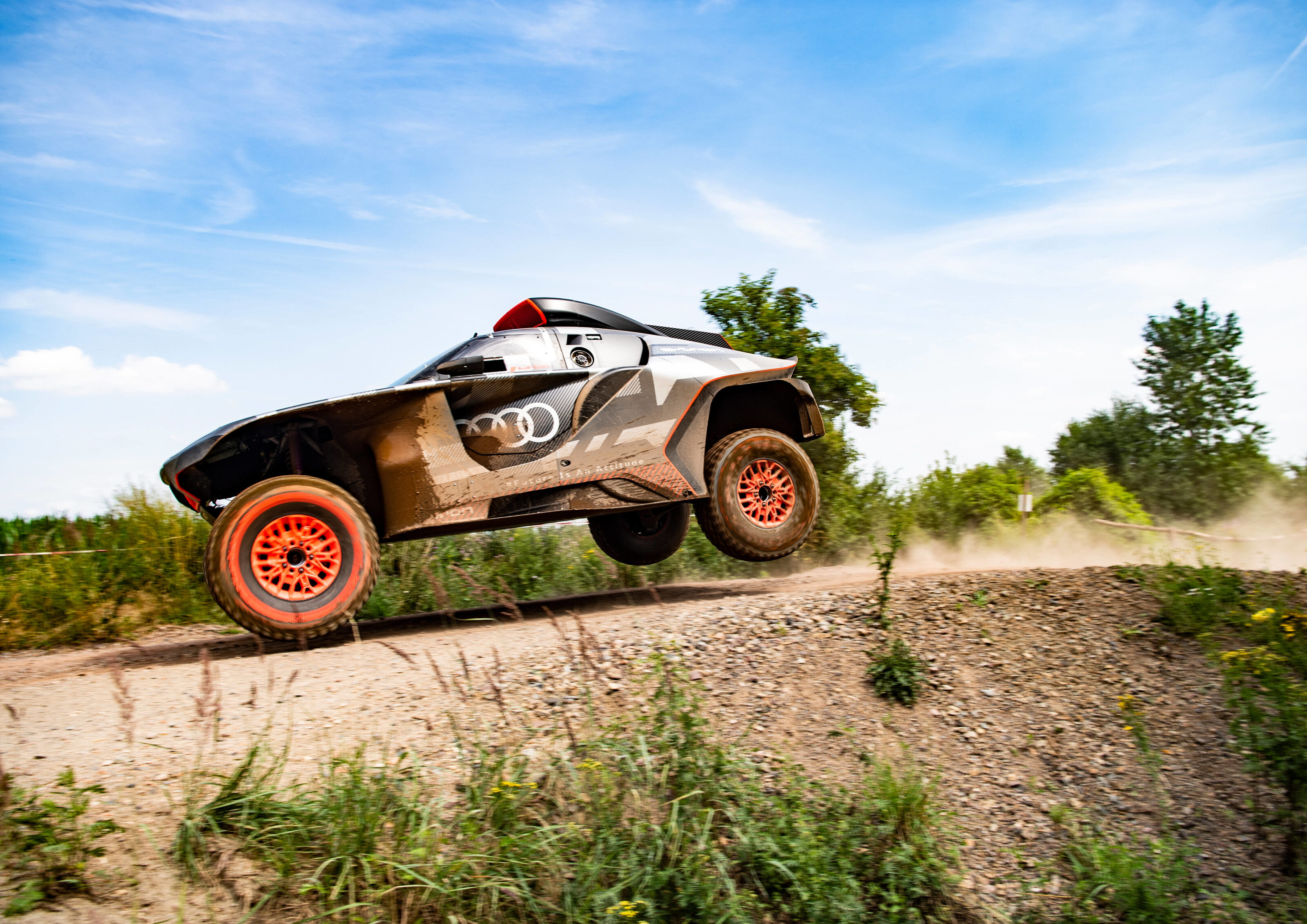
Weighing roughly 370kg, Audi says the battery is around the same size as that used in its FE car, and is charged while the RS Q e-tron is being driven.
Audi claims the final specific consumption of the engine is under 200 grams of fuel per kWh produced – roughly twice as efficient as a standard diesel generator. Given the RS Q e-tron is fitted with a 300-litre fuel tank, and with each litre weighing roughly 740g (depending on temperature), that means the Dakar challenger can generate more than a megawatt hour of power to get it through each stage.
At each axle will sit a motor generator and inverter lifted from the FE07 Formula E racer, while a third will be paired with the combustion engine. Audi claims the MGU units weigh just 35kg each (while the range extender tips the scales at 85kg).
Stepping away from Formula E provides Audi with extra engineering freedoms when it comes to the battery, of which the RS Q e-tron utilises a clean-sheet 50kWh capacity design. Weighing roughly 370kg, Audi says the battery is around the same size as that used in its FE car, and is charged while the RS Q e-tron is being driven.
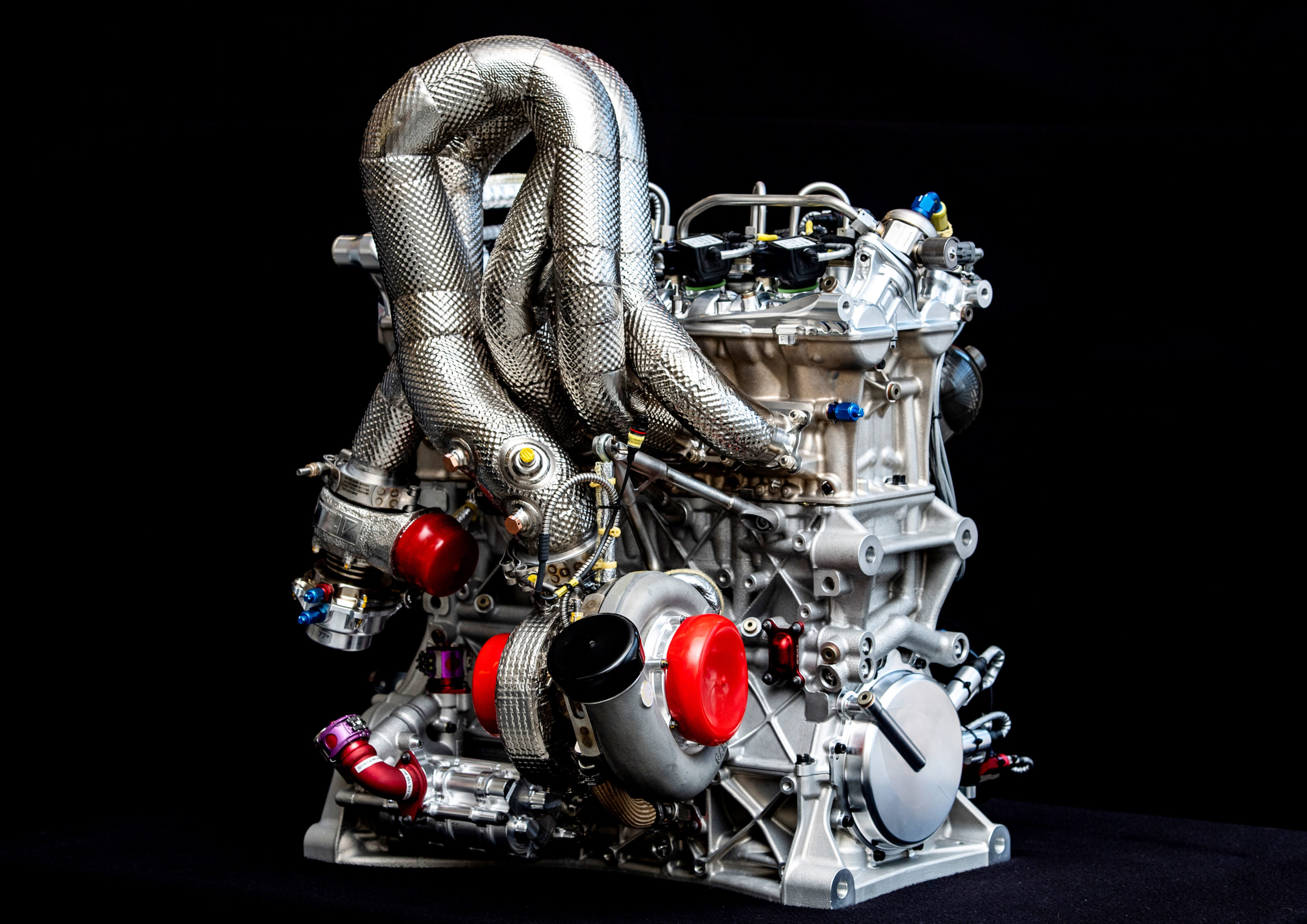
Combined the total system output is 500kW, but this figure will likely change as the final regulations the RS Q e-tron will compete under are still being finalised. Being electric, the front and rear axles of the RS Q e-tron have no physical connection. Instead, software will play the part of a central differential, helping shuffle power fore and aft as needed. This helps save weight, while lowering mechanical complexity.
There are other benefits, as explained by Stefan Dreyer, Head of Development at Audi Sport racing. “The drivetrain is extremely efficient,” he says. “There is hardly any power loss. You don’t have to expect temperature problems while you’re driving slowly in the sand.
“But, above all, the electric drivetrain is much easier to control in all of the given situations. The maximum torque is available from zero revolutions. You can regulate the drivetrain very precisely, whether the car is going over jumps or driving in the desert.
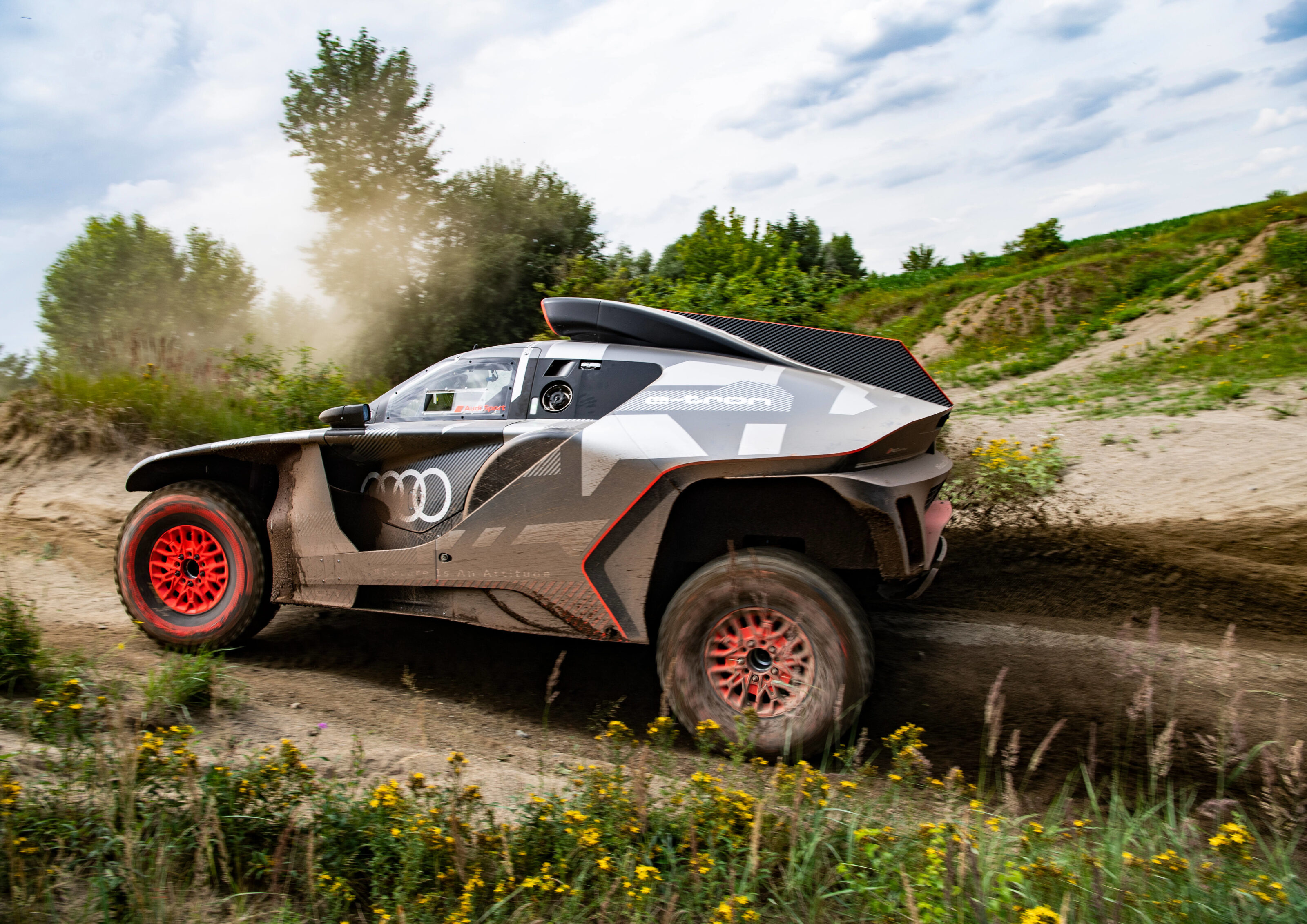
“The electric drivetrain does not react to external influences such as air pressure, temperature and humidity. And you can use it at full power throughout the rally. It’s all much more consistent.”
Audi will be hoping its best of both worlds strategy will allow it to become the first non-ICE driven car to claim victory in the Dakar rally.
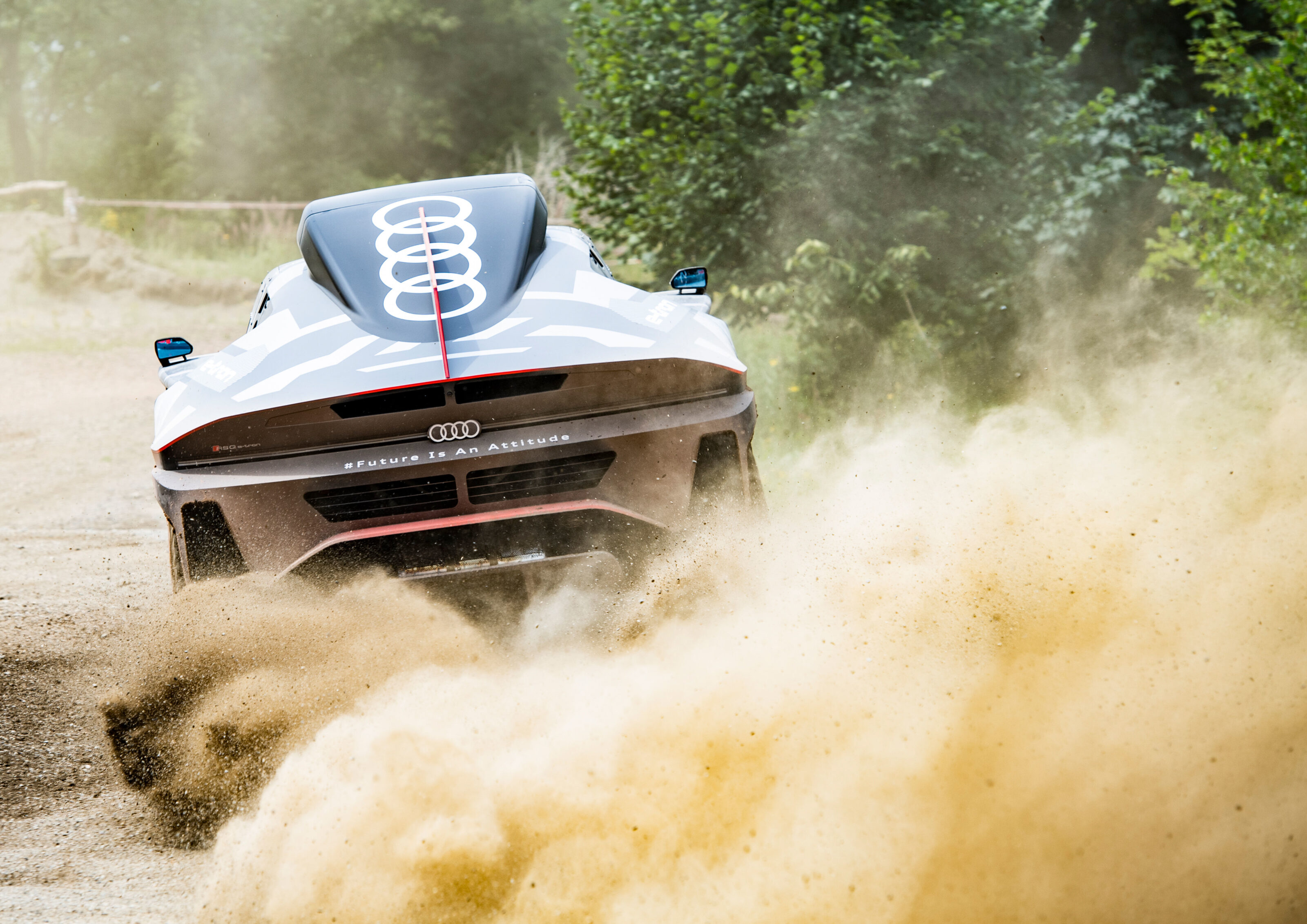
Energy management
Unlike a traditional race track, Audi’s engineers cannot plan every metre of the RS Q e-tron’s route in the Dakar rally, making engine management a challenge. As a result the team is having to develop new software that can adjust on the fly to ensure there is enough power generated to complete each stage.
Stress test
Where DTM and Formula E cars keep their wheels firmly planted on the ground, a Dakar racer needs to be able to clear dunes and other jumps. To compensate for these extra stresses engineers have strengthened several parts of the drivetrain with new casings and shock-absorbent mountings.
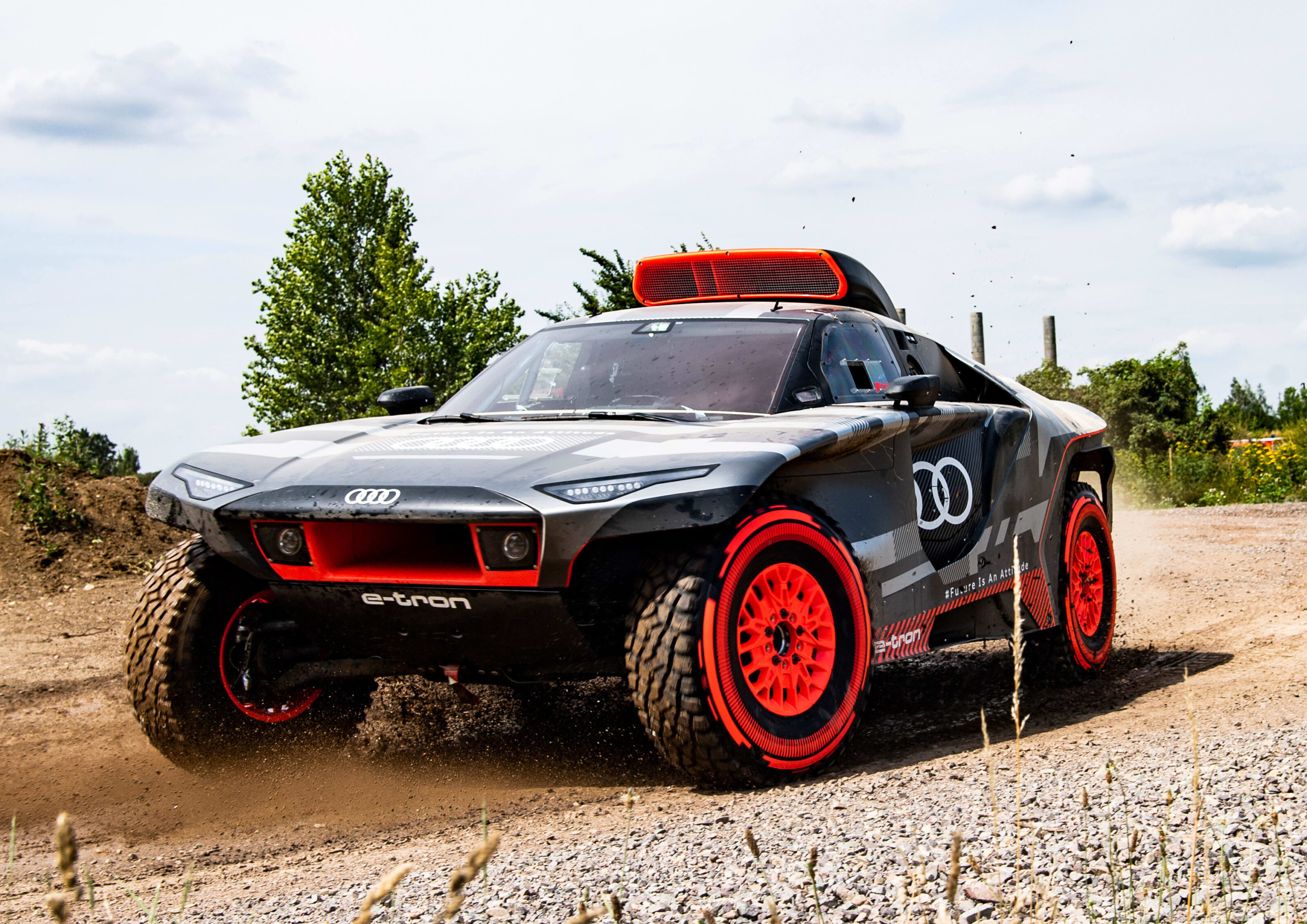
Alternate fuels
Audi has already been playing with using alternative fuel sources for its DTM-sourced range extender. In 2019 it used a “more climate friendly high performance fuel developed by Aral” in a ride car, claiming that the fresh mix reduced C02 emissions by 30 per cent without any modifications to the engine.
Heavyweight sprinter
While final race-spec homologation is yet to be finalised, the RS Q e-tron is expected to weigh in at roughly 2000kg sans drivers – making it one of Audi’s heaviest race cars. Understandable considering it is 4.5 metres long, 2.3 metres wide, and 1.9 metres tall. Mind you, it’ll still crack 100km/h in a claimed 4.5 seconds, even on loose surfaces.






